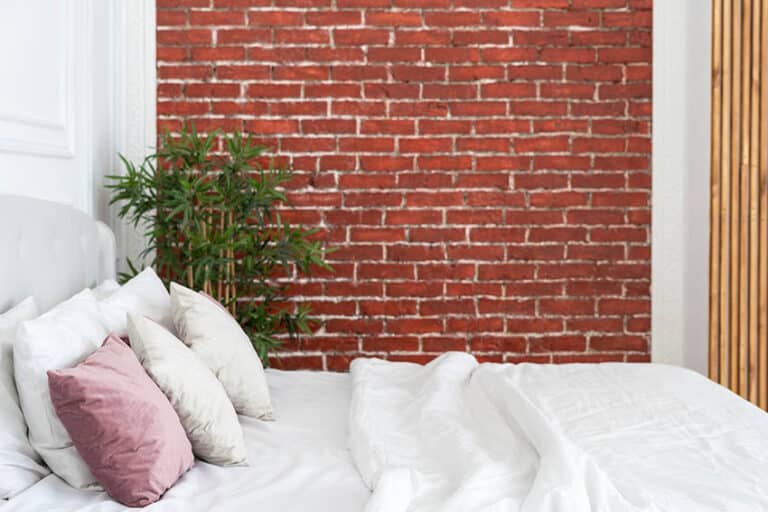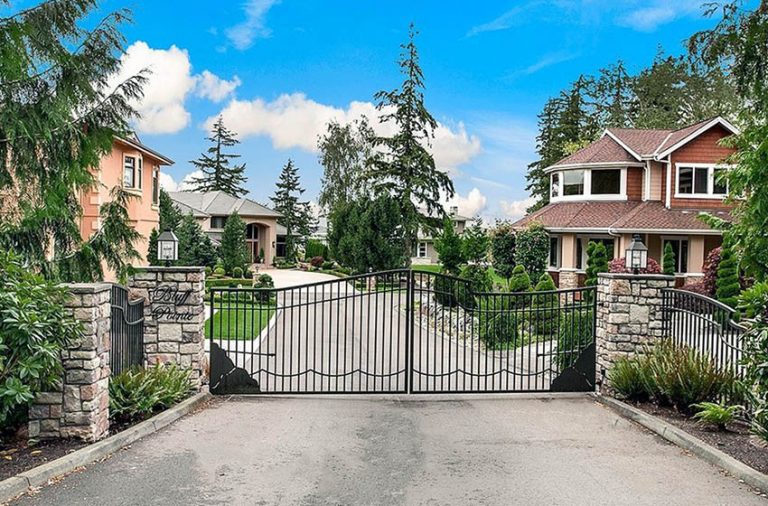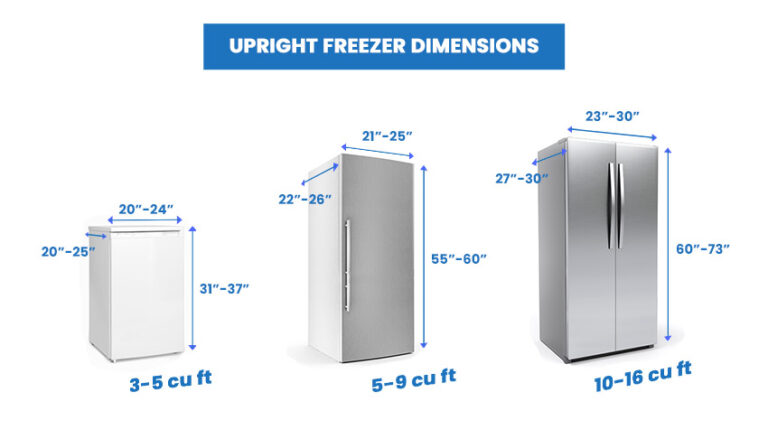Exposed Aggregate Driveway (Design Guide)
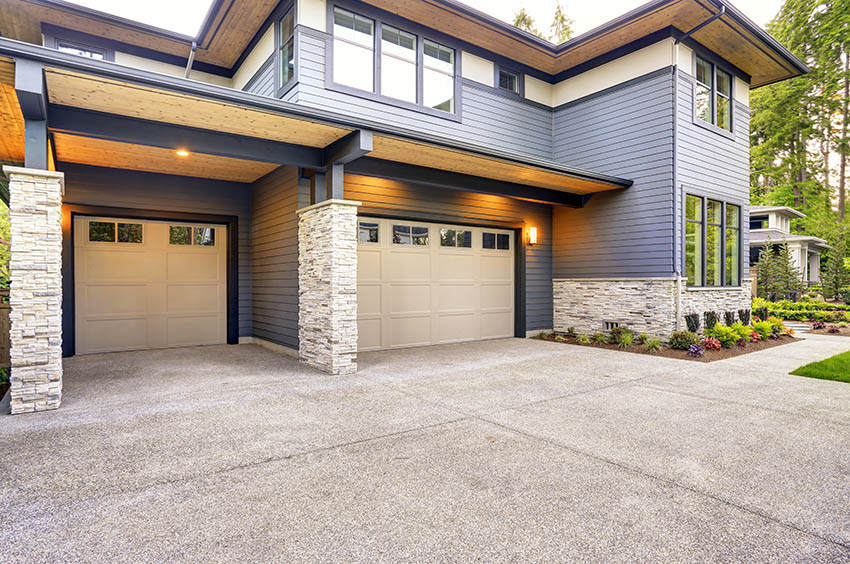
Exposed aggregate driveways have long been popular for their durability and attractive, natural appearance. Now that these types of driveways are gaining more attention, it’s important to cover the basics of these exposed aggregate surfaces.
Exposed Aggregate Driveway Design

Aggregate is a construction term that refers to loose particulate material. The material could be rocks, pebbles, stone dust, or even crushed shells.
Aggregate is a major component of concrete, affecting its strength, texture, and appearance. When a traditional concrete driveway is poured, the result is a smooth surface.
To achieve an exposed aggregate look, that top layer is stripped away using chemicals or water washing, revealing the aggregate underneath. A different look will be achieved depending on what aggregate material is used.
Exposing aggregate that includes heavy concentrations of sand will reveal a sandpaper-like texture, with colors ranging from light yellow to golden brown.
A mix of black and white stones creates a beautiful grayscale finish design. The bright white of crushed shells is a popular aggregate material in beach communities.
Exposed aggregate, like concrete, boasts impressive durability and compression strength. Heavy vehicles can be driven on exposed aggregate driveways without risks of cracking or sinking.
Other than the expansion joints, which allow the material to expand and contract with minimal cracking, exposed aggregate is laid as a slab. Fewer joints lead to a more even walking surface, reducing the risk of trips and falls.
Driveway Cost
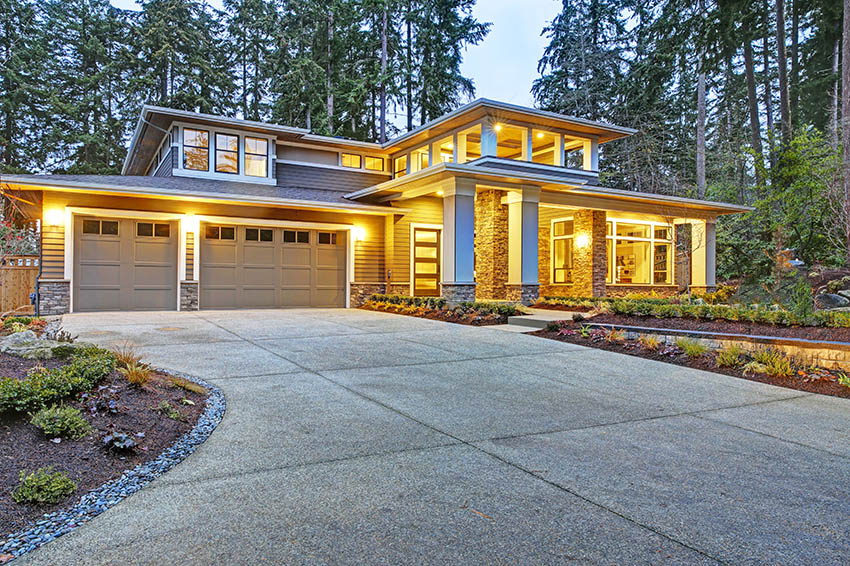
While gravel driveways can be laid by a determined DIYer, aggregate driveways are best left to the professionals. A professional installation will ensure an attractive and durable finished product, and the results will last for years to come.
Properly installed exposed aggregate driveways can be expected to endure for upwards of 30 years.
The typical two-car driveway is 24 feet wide and 20 feet long, or 480 square feet. To calculate the cost of an aggregate driveway, you must include the price of materials and the labor to install them.
The cost of materials varies widely. Expect to pay at least $600 for the concrete and aggregate material. If higher-end materials such as quartz are included in the aggregate mix, you may spend as much as $1,300 procuring your materials.
Installation costs vary based on the cost of labor in your location. Expect to be quoted between $700 and $1,100 for all the labor related to transforming an average-sized two-car driveway, or between $3 and $5 per square foot.
Exposed-Aggregate Driveway Sealer
The properties of the sealant you choose will affect the appearance and utility of your driveway for years to come. Select a sealant that includes UV protection and is non-yellowing. It should repel water, grease, and oil and be resistant to stains. A sealant with a high-gloss wet look can reveal more vibrant or deep colors in the aggregate.
The exposed aggregate must be completely cured and free of dust before the first application of sealant. Wash the entire surface and allow it to dry.
Choose a day with minimal wind to reduce the amount of dust that blows into your sealant, as this can affect the final appearance.
Some sealants must be stripped away or removed before a new coat is applied. The uneven surface of exposed aggregate makes this difficult, if not impossible, so save yourself the headache by choosing a resealable product.
Aggregate-Driveway Repair
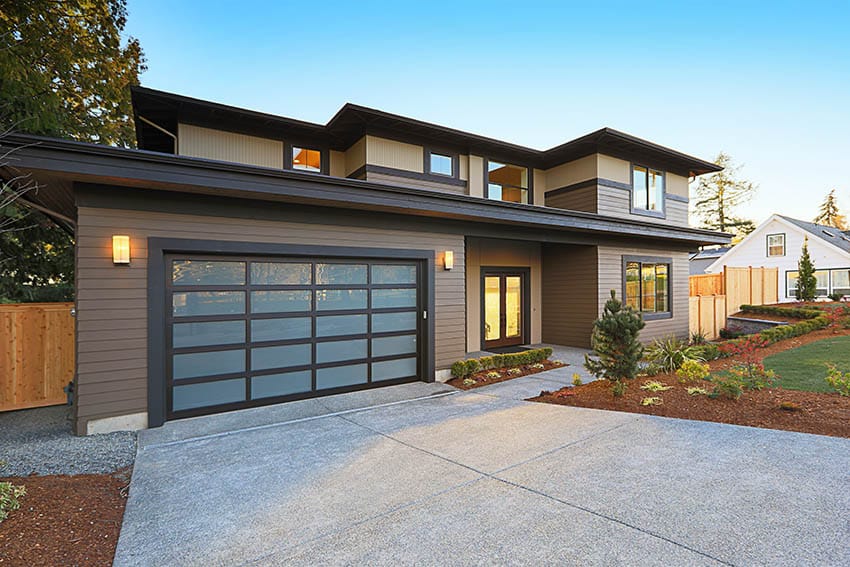
While paver driveways need constant monitoring and replacement as cracks inevitably appear, exposed aggregate driveways need minimal maintenance.
All concrete will eventually crack. Expansion joints are gaps in the concrete that encourage it to crack along specific lines. This allows it to move and shift with changes in temperature and humidity without losing strength.
Talk to your installer about where to expect cracking. Should other cracks appear in your exposed aggregate, taking care of them promptly will extend the life of your driveway.
Concrete typically needs to be resealed every few years to protect its smooth and even top layer. This top layer was stripped away in exposed aggregate driveways before the first coat of sealant was applied.
Different installers will recommend different maintenance schedules, but exposed aggregate driveways can go up to five years without reapplication of sealant.
There is one form of damage unique to exposed aggregate concrete applications. When the aggregate loses its bond with the concrete, the material will wash away, leaving you with bald patches or depressions. Untreated, they are likely to increase in size. Luckily, restoring the original look is fairly easy.
Repairing bald patches in an aggregate driveway is a great DIY project. You’ll be using epoxy, so the first step is to prepare a clean and dry surface, giving you the best chance of a firm bond.
Make sure any loose material is swept away and use a pH neutral cleanser. Mix concrete dust with a single-component epoxy, and spread it over the clean and dry bald patch.
Ideally, you’d have aggregate left over from the installation of your drive. If not, your installer can help you source extra material that will match the appearance of your exposed aggregate.
You want the patch material to be consistent with the original in terms of concentration, color, and material.
Spread the aggregate in an even layer and press it into the epoxy/concrete dust mix. Sweep concrete dust over the patch to fill in any gaps, and allow the epoxy to cure.
When you’re happy with the result, sweep any loose dust away and apply a layer of concrete sealant using a paint roller.
Exposed-Aggregate vs Concrete Driveway

Homeowners who favor a more natural appearance for the outside of their residence may be impressed by exposed aggregate driveways.
Rather than an uninspired and industrial gray concrete slab, exposed aggregate offers nearly limitless customization of appearance.
If you have a driveway that has significant inclining or declining slopes, or if your household includes children, elders, or other folks with limited mobility, an exposed aggregate surface might be for you.
The rough surface of exposed concrete provides a stable and naturally non-slip surface. With traditional concrete, grit is sometimes added; exposed aggregate eliminates the need for this extra step.
For more related content see out comparison page of pavers vs concrete driveways.


